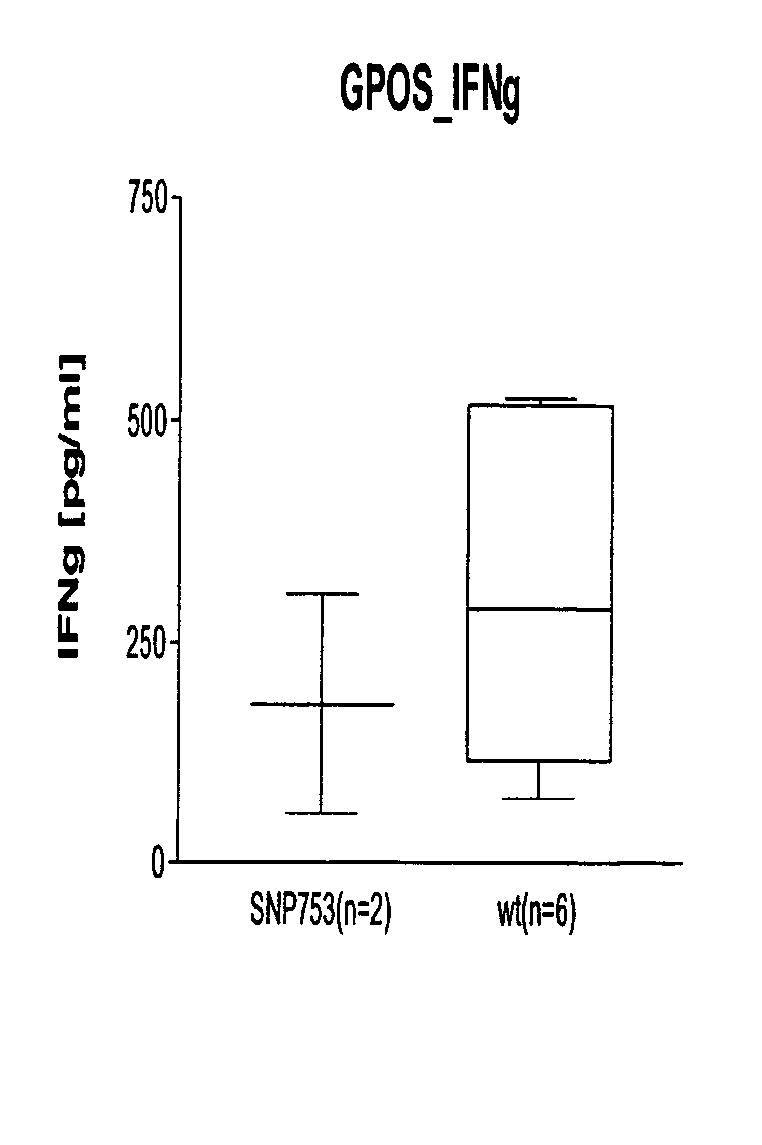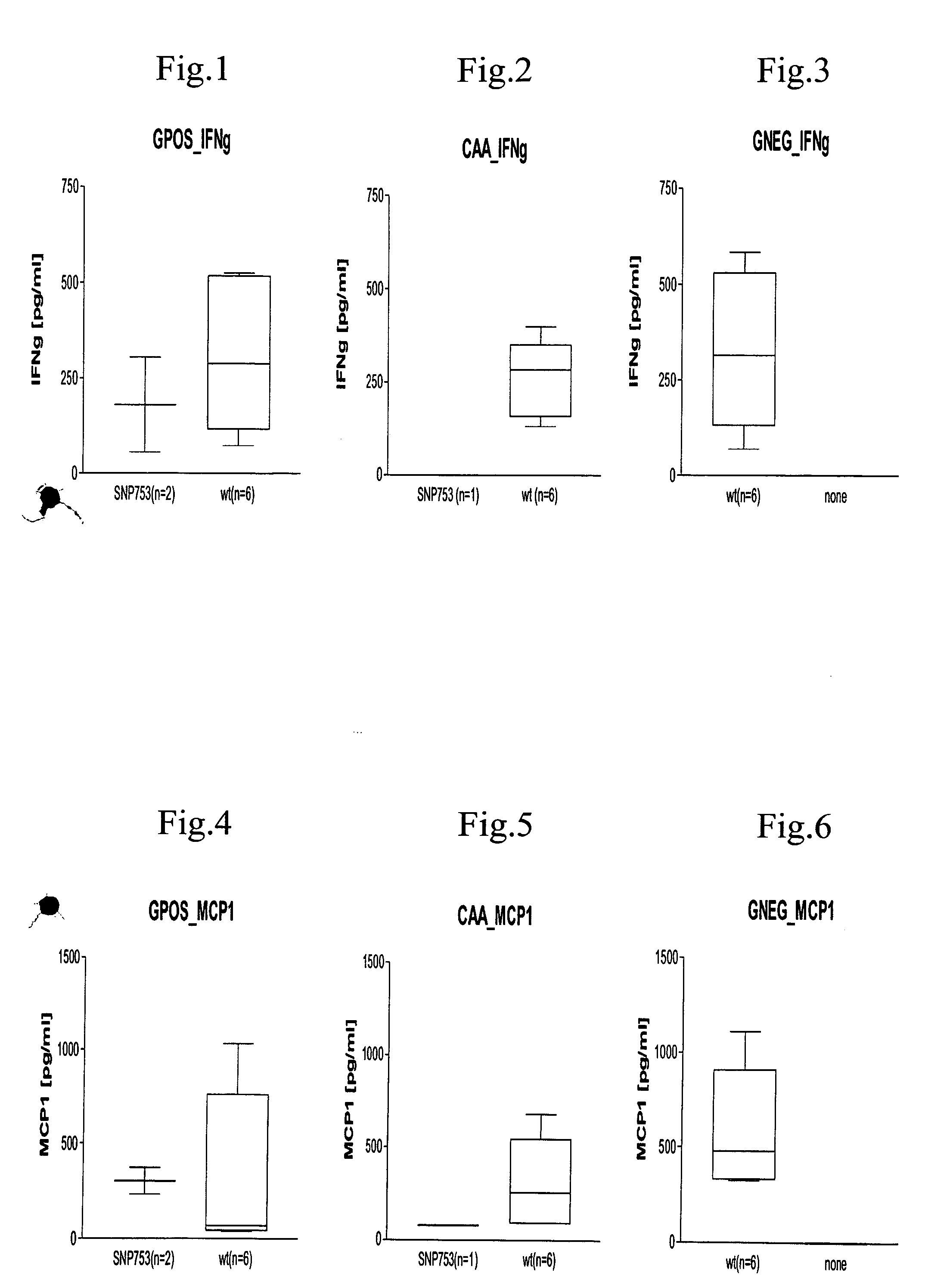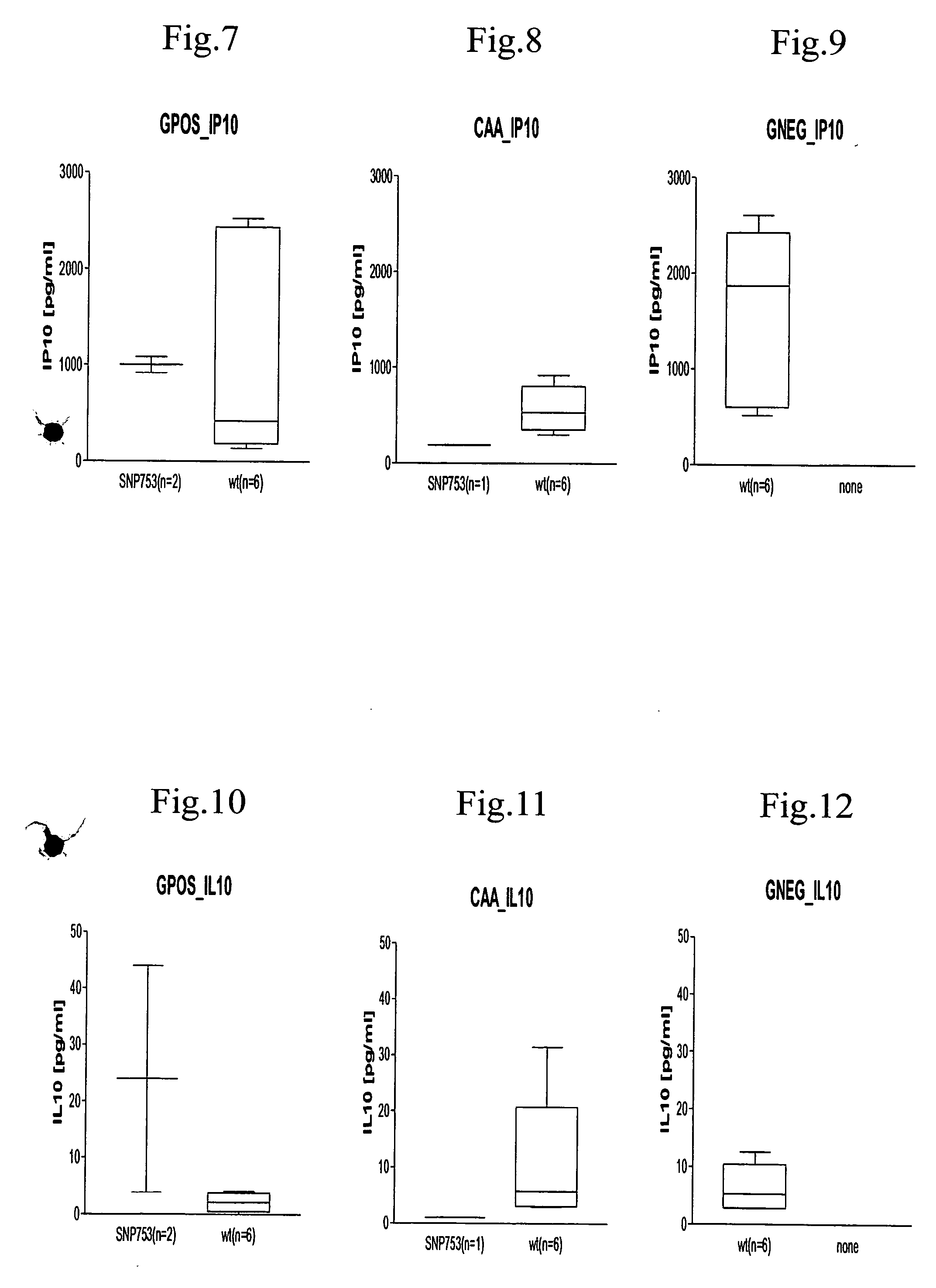Ilcs based pattern recognition of sepsis
a sepsis and pattern recognition technology, applied in the field of sepsis pattern recognition, can solve the problems of rapid and particularly serious developments, blood tests that do not permit a dynamic examination, and impair the function of the test, and achieve the effect of monitoring the efficacy of therapy
- Summary
- Abstract
- Description
- Claims
- Application Information
AI Technical Summary
Benefits of technology
Problems solved by technology
Method used
Image
Examples
example 1
[0087] Informative genes were identified that are useful in characterizing cellular activity patterns for various forms and causes of sepsis. FIG. 1 clearly shows that the activity patterns exhibit significant differences from one sepsis patient to another. These differences can be drawn on to characterize sepsis and especially for the subdivision into subtypes of sepsis. In this way it is in particular possible to recognize types of sepsis by diagnostic means on the basis of the measured activity patterns. This can be exploited in a targeted manner for tracking therapy.
[0088] Samples were obtained from sepsis patients and subjected to multi-analyte profiling (MAP). Expression values were obtained for 98 informative genes (see table 1; FIGS. 2-10 and 12-18). Parameters used for MAP analysis include lowest detectable dose, normal range, dynamic range, imprecision, spiked recovery, linearity, correlation, cross-reactives and matrix interferences. These parameters are combined or used...
example 2
[0095] Informative genes were used to determine their utility in distinguishing different causes of sepsis. FIG. 20 shows cells stimulated with different factors and the effect of stimulation on specific informative genes.
[0096] The effect on the cellular activity patterns of particular informative genes with respect to drug treatment are shown in FIG. 21.
PUM
| Property | Measurement | Unit |
|---|---|---|
| Time | aaaaa | aaaaa |
| Time | aaaaa | aaaaa |
| Time | aaaaa | aaaaa |
Abstract
Description
Claims
Application Information
 Login to View More
Login to View More - R&D
- Intellectual Property
- Life Sciences
- Materials
- Tech Scout
- Unparalleled Data Quality
- Higher Quality Content
- 60% Fewer Hallucinations
Browse by: Latest US Patents, China's latest patents, Technical Efficacy Thesaurus, Application Domain, Technology Topic, Popular Technical Reports.
© 2025 PatSnap. All rights reserved.Legal|Privacy policy|Modern Slavery Act Transparency Statement|Sitemap|About US| Contact US: help@patsnap.com



